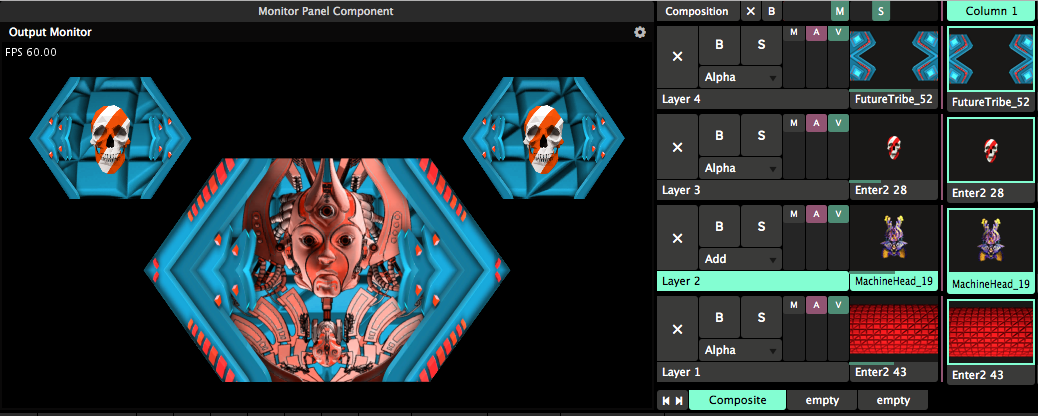
I know, why don't I just use Photoshop's Eraser Tool! That's what I'll do. What I really want is for the couple in both images to remain fully visible, with the blending of the two images happening in the area between the bride walking away from us on the left and her looking towards us on the right. So far in our quest to blend our two photos together, we've tried lowering the opacity of the top layer with disappointing results, since all that basically did was fade the entire image. This effect may work if I was trying to turn the wedding couple into a couple of ghosts, but it's not really what I was hoping for, so I'm going to raise the opacity of the top layer back to 100% to make the top image fully visible once again. After lowering the opacity of the top layer (which again contains the image of the couple facing towards the camera on the right), the image on the bottom layer of the couple walking in the woods is now showing through the image above it. The image on the bottom is now showing through the image on the top layer. Here I have a couple of wedding photos that I think would work well blended together. Shortcodes, Actions and Filters Plugin: Error in shortcode What you would need is some way to control the transparency of different areas of the layer separately. But you can't do that with the Opacity option since as I said, it's limited to controlling the transparency of the entire layer at once. That may be fine for some situations, but what if you want only part of a layer to be transparent? What if you want the left side of the layer to be completely transparent, the right side to be completely visible, with a gradual transition between the two through the middle of the layer? That's actually a very common thing to do with a layer in Photoshop, allowing you to fade from one image to another. If you lower the Opacity level down to, say, 50%, the entire layer becomes 50% transparent.


The Opacity option changes the transparency level for the entire layer at once. The Opacity option in the top right corner of the Layers palette also allows you to control a layer's transparency.īut here's the difference. I can already control the transparency level with the Opacity option, can't I?", and yes, you certainly can. It allows you to control a layer's level of transparency.

So what are layer masks then? Well, if the term "mask" is what's confusing you (and who could blame you), replace the word "mask" in your mind with "transparency", because that's exactly what a layer mask does. It's a good thing for us, then, that layer masks are so incredibly simple and easy to understand!ĭownload this tutorial as a print-ready PDF!īefore we continue, if you're unsure of what a layer is, you may want to read our tutorial on Photoshop layers before learning about layer masks. Layer masks are right up there at the top of the list of things you really need to know about when working in Photoshop because without them, your work, your creativity and your flexibility all suffer. Apparently, the wise man was a big Photoshop user who may have spent a little too much time alone on top of the mountain.

If you've been staying away from using layer masks with your Photoshop work because you thought they were somehow beyond your skill level, well, if you know the difference between black and white and can paint with Photoshop's Brush Tool, you already have all the skills you need!Ī wise man once said, "Nothing worth doing in life should be done without layer masks". We'll cover exactly what layer masks are, how they work, and why you want to use them. In this Photoshop tutorial, we're going to look at one of the most essential features in all of Photoshop - layer masks.


 0 kommentar(er)
0 kommentar(er)
